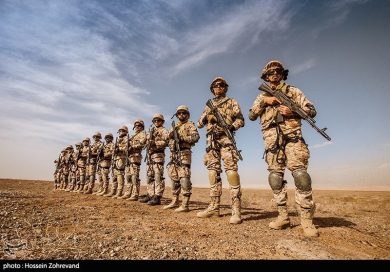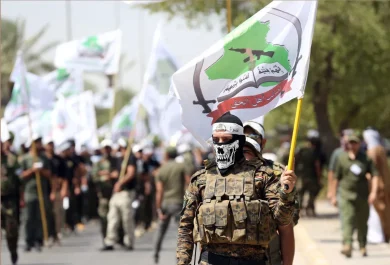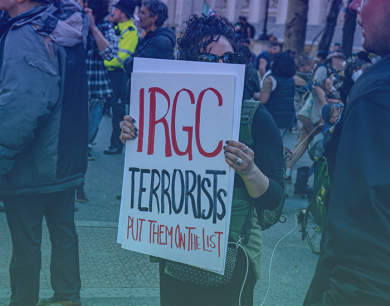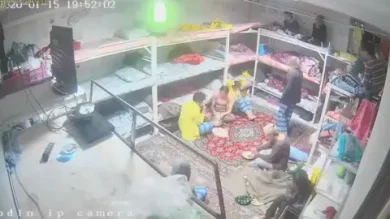Since its establishment in 1979, the Islamic Revolutionary Guard Corps (IRGC) has grown into the primary enforcer of ideological conformity in the Islamic Republic of Iran. Far beyond its military duties, the IRGC serves as the regime’s most powerful tool for suppressing political dissent, silencing civil society, and controlling every facet of public expression. With command over military, intelligence, economic, and digital resources, the IRGC has developed a multi-layered strategy to identify, intimidate, and eliminate opposition—whether it comes from the streets, the universities, the media, or even within the state.
This article investigates the IRGC’s central role in crushing dissent inside Iran: its tools, tactics, institutions, and the human toll inflicted on millions of Iranians who dare to speak up.
1. The IRGC’s Mandate: Protecting the Revolution, Not the People
While the Iranian Army is tasked with defending the country’s borders, the IRGC was established to defend the values of the 1979 Islamic Revolution. That mission includes preserving clerical rule, preventing reformist momentum, and combating “internal enemies”—a term the regime uses broadly to describe anyone challenging its authority.
This ideological mandate gives the IRGC wide latitude to monitor, intervene, and repress, often operating above the law and beyond public accountability.
2. The Basij: IRGC’s Street-Level Enforcers
The Basij Resistance Force is a paramilitary volunteer militia under IRGC command. It plays a crucial role in identifying dissent, intimidating the population, and violently breaking up protests.
Key Tactics:
• Street patrols during protests and religious holidays
• Raids on student dormitories and activists’ homes
• Monitoring “un-Islamic” behavior such as unveiled women or mixed-gender gatherings
• Intimidation campaigns in schools and universities
During protest movements such as the 2009 Green Movement, the 2017-2018 economic protests, the 2019 fuel uprising, and the 2022 Mahsa Amini protests, the Basij were deployed en masse to beat, shoot, and detain demonstrators—often with live ammunition.
3. Intelligence and Surveillance: A Domestic Spy Empire
The IRGC Intelligence Organization (SAS) has become the most powerful intelligence body in Iran, often eclipsing the Ministry of Intelligence. It monitors political activists, journalists, religious minorities, and ordinary citizens through surveillance, informants, and digital tracking.
Tools of Suppression:
• Mass phone tapping and internet surveillance
• Monitoring of Telegram, Instagram, and WhatsApp groups
• AI-powered facial recognition during protests
• Cyber units to hack activists, NGOs, and opposition figures
Those identified as dissidents are often placed under travel bans, summoned for “friendly conversations,” or arrested without warrant.
4. Arbitrary Arrests and Incommunicado Detention
Arrests by the IRGC are often carried out without charges or access to legal counsel. Detainees are held in IRGC-run detention centers, such as Evin Prison’s Ward 2-A, which is notorious for torture, solitary confinement, and forced confessions.
Methods Reported by Survivors:
• Sleep deprivation
• Beatings
• Waterboarding
• Mock executions
• Threats of rape against detainees or their family members
These facilities operate without judicial oversight, and lawyers are often barred from accessing their clients for weeks or even months.
5. Show Trials and Propaganda
Once arrested, dissidents are frequently subjected to staged trials in Iran’s Revolutionary Courts, where evidence is fabricated or extracted under torture.
Prosecutors, often with direct links to the IRGC, accuse detainees of vague charges such as:
• “Acting against national security”
• “Collaboration with hostile states”
• “Corruption on Earth” (a charge punishable by death)
The IRGC also films forced confessions and broadcasts them on state television to demonize activists and deter public support.
6. Crushing the Mahsa Amini Protests (2022–2023)
The death of Mahsa Jina Amini in IRGC-collaborating “morality police” custody triggered the largest uprising in Iran in decades. The IRGC responded with a nationwide crackdown.
IRGC Actions Included:
• Killing over 500 protesters, including dozens of children
• Injuring thousands with live rounds, rubber bullets, and batons
• Arresting more than 20,000 people
• Executing young protesters, such as Mohsen Shekari and Majidreza Rahnavard, after sham trials
Sniper fire, internet blackouts, and even air attacks were used in Kurdish and Baluchi regions—escalating the crackdown to military levels.
7. Suppression of Minorities: Ethnic and Religious Targeting
The IRGC disproportionately targets ethnic and religious minorities, whom the regime views as potential separatists or heretics.
Victimized Groups:
• Kurds: Subject to military occupation and targeted assassinations.
• Baluchis: Victims of massacres in Zahedan; many disappear without trial.
• Baháʼís: Systematically denied education, housing, and arrested in mass sweeps.
• Sunnis: Their mosques are surveilled, and Sunni clerics are imprisoned for preaching.
In many cases, IRGC commanders label these groups as “foreign agents” to justify repression and military force.
8. Media Control and Censorship
The IRGC has a powerful media and cyber wing that enforces ideological purity and suppresses independent journalism.
Strategies:
• Blocking of foreign news sites and VPNs
• Arrest and torture of journalists
• Manipulating public opinion through fake accounts
• Ownership of major news agencies, such as Fars News
Online activists are often tracked, hacked, and arrested. Even bloggers with modest followings have been imprisoned for criticizing the regime.
9. Targeting Artists, Students, and Cultural Figures
Iran’s rich cultural scene is under constant IRGC scrutiny. Musicians, filmmakers, poets, and visual artists who express dissent face censorship, arrest, or exile.
Examples:
• Rapper Toomaj Salehi was tortured and sentenced to death for protest songs.
• Filmmaker Jafar Panahi was repeatedly imprisoned and banned from travel.
• University students were dragged from dorms and forced to confess to “Western corruption.”
The IRGC views cultural influence as a threat to its control—and thus treats creative freedom as subversion.
10. Economic Control and Repression
The IRGC controls much of Iran’s economy, including large portions of infrastructure, construction, telecom, and energy. This power is used not just for profit—but for control.
Economic Tools of Suppression:
• Cutting subsidies to protest-heavy regions
• Blacklisting families of dissidents from employment
• Forcing universities and NGOs to hire Basij or IRGC loyalists
• Confiscating property of political prisoners
This financial grip enables the IRGC to punish opposition not only with prison—but with poverty.
11. Gender-Based Repression
Women in Iran face unique and severe repression, particularly by the IRGC and its morality enforcement arms.
Specific Tactics:
• Arrests for violating hijab laws
• Sexual assault in detention
• Harassment of women-led protests
• Banning of female lawyers and athletes who speak out
During recent uprisings, many women were deliberately targeted with shotgun pellets to the face and genitals—designed to mark, shame, and silence them.
12. The Use of the Death Penalty as a Weapon
The IRGC often pushes for the death penalty in cases of protest or dissent. Executions are fast-tracked through closed courts, often based on confessions obtained under torture.
Executed for Protesting:
• Navid Afkari (wrestler, 2020)
• Mohsen Shekari (2022)
• Majidreza Rahnavard (2022)
• Saeed Yaghoubi and Mohammad Mehdi Karami (2023)
The goal is to terrorize the population into silence—not to administer justice.
13. Academic and Educational Repression
Universities and schools are heavily monitored by IRGC forces.
• Basij units operate on campus
• Professors are vetted for ideological purity
• Student activists are expelled or arrested
• Textbooks are censored or rewritten
During protests, university sit-ins were often attacked by IRGC personnel in plain clothes. Some students were forcibly disappeared.
14. Exile and Transnational Repression
The IRGC doesn’t stop at Iran’s borders. Dissidents abroad—journalists, activists, academics—are subject to threats, surveillance, and assassination plots.
High-Profile Cases:
• Masih Alinejad: Target of IRGC kidnapping and assassination attempts in the U.S.
• Ruhollah Zam: Iranian journalist lured from France, kidnapped, and executed in Iran.
• Exile communities in Turkey, Germany, and the Netherlands are frequently infiltrated.
This extraterritorial repression is part of the IRGC’s global effort to destroy dissent wherever it exists.
15. IRGC as a Culture of Fear
The IRGC has created an environment in which fear becomes a daily condition. People censor themselves in taxis, classrooms, and even family gatherings. Children are taught to fear “agents.” Teachers warn students not to repeat parents’ conversations.
This culture of fear is sustained not just through violence—but through surveillance, economic punishment, and public spectacle.
Conclusion: The Cost of Control
The IRGC has turned Iran into a state where dissent is not tolerated but punished—often with imprisonment, torture, or death. It has criminalized protest, censored art, strangled academia, and institutionalized fear. But in doing so, it has also ignited a deeper resistance.
Join Our Newsletter!
Stay informed with the latest updates, news, and ways to take action in the fight for justice and global security. Sign up now to get updates delivered straight to your inbox!





